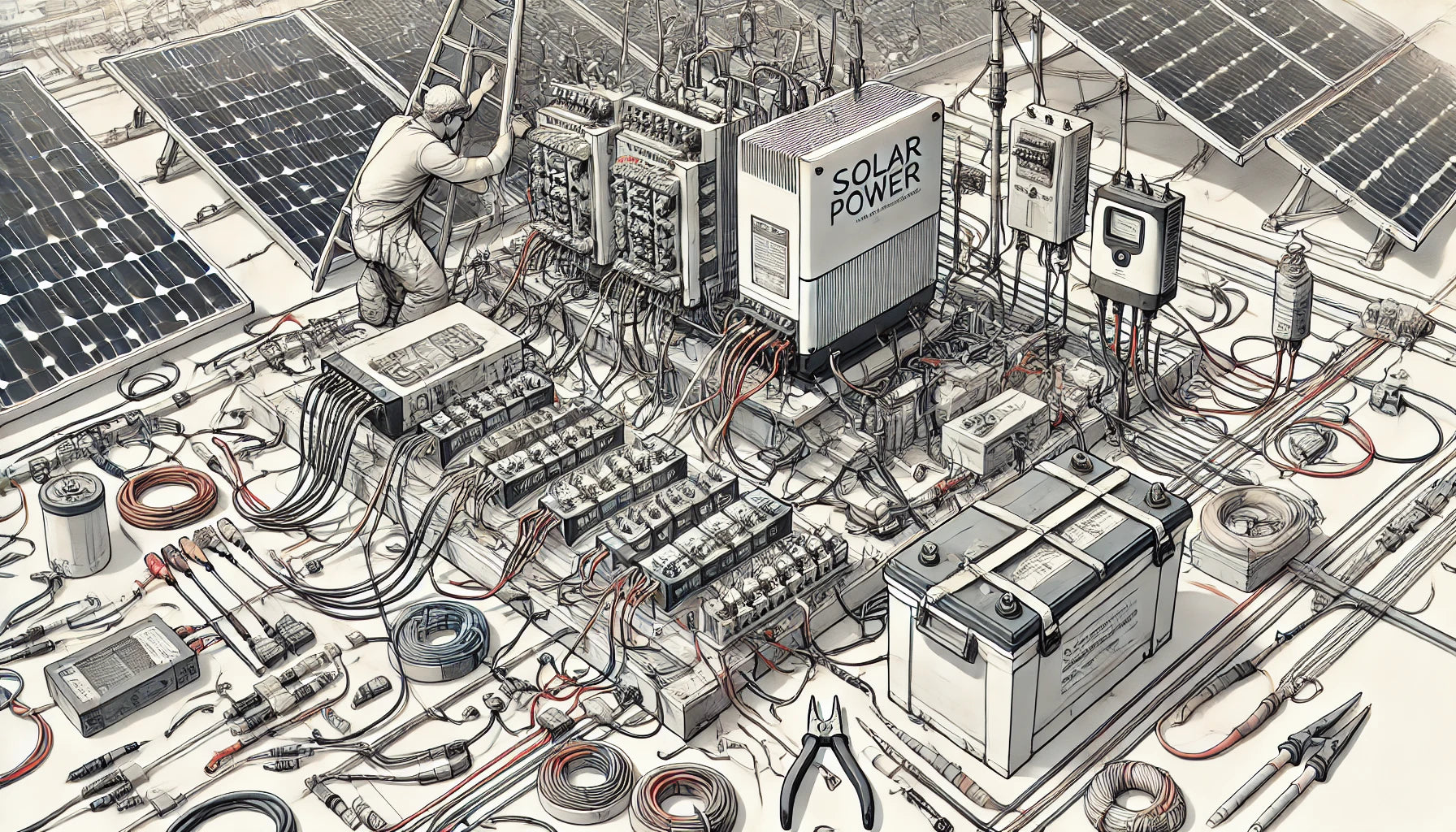
Mastering Solar Panel Wiring: Series vs. Parallel for Optimal Solar Power Efficiency
As the demand for solar energy continues to rise, understanding the best way to wire your solar panels is crucial for optimizing your system's performance. Whether you’re setting up solar for your home, RV, or an off-grid cabin, wiring configurations like series and parallel play a vital role in the efficiency, safety, and functionality of your solar array. In this comprehensive guide, we'll explore the differences between series and parallel wiring, their unique benefits, and how you can choose the best configuration to suit your needs. Plus, we’ll highlight essential solar products available at Crisis Comforts to help you build a powerful and reliable solar setup.
Series vs. Parallel Wiring: What You Need to Know
Solar panels can be wired in series, parallel, or even a combination of both to achieve the desired voltage and current levels. Here's a breakdown of each method and what makes them distinct:
Series Wiring
Series wiring connects solar panels by linking the positive terminal of one panel to the negative terminal of the next. This setup increases the overall voltage while keeping the current the same, making it ideal for systems that require high voltage to operate efficiently.
-
Advantages:
- Higher voltage output reduces power loss over longer distances, making it ideal for larger installations.
- More efficient connection to high-voltage inverters or battery banks, allowing for fewer losses in power conversion.
-
Drawbacks:
- The entire series is affected if one panel is shaded or faulty, reducing overall performance.
- Requires careful planning to ensure panels are evenly exposed to sunlight to avoid significant efficiency losses.
For optimal performance with series wiring, consider using the Rich Solar 8000W 48V Off-Grid Cabin Kit, designed to provide high voltage power perfect for larger, off-grid setups.
Parallel Wiring
Parallel wiring connects the positive terminals of all panels together and the negative terminals together, which increases the current while maintaining the same voltage. This configuration is particularly useful when panels have varying orientations or are subject to partial shading.
-
Advantages:
- Panels work independently, so shading on one panel doesn’t significantly impact the others.
- Easier to expand the system gradually, as new panels can be added without major rewiring.
-
Drawbacks:
- Higher current requires thicker cables, which can increase installation costs.
- Lower system voltage may result in higher losses over longer cable runs.
For setups requiring more adaptability and to minimize shading impact, the Bluetti AC200P Portable Power Station is an excellent choice. It supports parallel wiring, ensuring maximum power delivery even when conditions aren't perfect.
Choosing the Right Configuration for Your Solar Setup
Deciding between series and parallel wiring depends on various factors, including your system’s size, energy needs, installation environment, and budget. Here’s how to make the best choice:
-
Installation Environment: Series wiring is best suited for environments with consistent sunlight, where shading is minimal. If you’re installing panels on a rooftop that gets varying sun exposure, parallel wiring provides more reliability.
-
System Voltage and Current Needs: For high-voltage systems, such as those connected to a grid-tie inverter or large battery bank, series wiring is generally more efficient. On the other hand, parallel wiring is ideal when the system needs to handle variable conditions or when installing additional panels later on.
-
Cost and Scalability: Parallel setups may incur higher initial costs due to thicker cables and connectors, but they offer more scalability. Series systems, while initially cheaper, require careful planning for future expansions.
Boost your solar array's performance with versatile products like the Sun Gold Power 6kW 48V Split Phase Inverter, which supports both series and parallel configurations, allowing for maximum system customization.
Enhance Your Solar Power Setup with Crisis Comforts
When choosing products for your solar setup, selecting high-quality components can make a significant difference in efficiency and performance. At Crisis Comforts, we offer a range of solar products designed to meet diverse wiring needs:
-
EndurEnergy Portable Solar Power Solutions: These solutions are excellent for both series and parallel configurations, giving you flexibility to adapt based on your energy needs.
-
DuroMax Dual Fuel Generators: Perfect for integrating into your solar setup, these generators can work seamlessly with parallel-wired solar systems to provide backup power when needed.
-
Fortress Power Battery Storage: Designed to handle both high-voltage and high-current systems, Fortress Power batteries are the ideal addition to any solar setup, whether you wire your panels in series or parallel.
-
Rich Solar Off-Grid Power Kits: Expand your system with easy-to-install kits that support both wiring methods, providing reliable power even in remote locations.
Conclusion: Optimize Your Solar Wiring for Maximum Efficiency
Selecting the right wiring configuration—series or parallel—can greatly influence the success and efficiency of your solar power system. Whether you need the high voltage of series wiring or the shading resilience of parallel wiring, there’s a setup that’s right for your needs. Explore the wide range of high-quality solar products at Crisis Comforts to find the perfect components to enhance your solar array.
For expert advice and the best solar products tailored to your wiring needs, visit Crisis Comforts today and start building your perfect solar setup.

